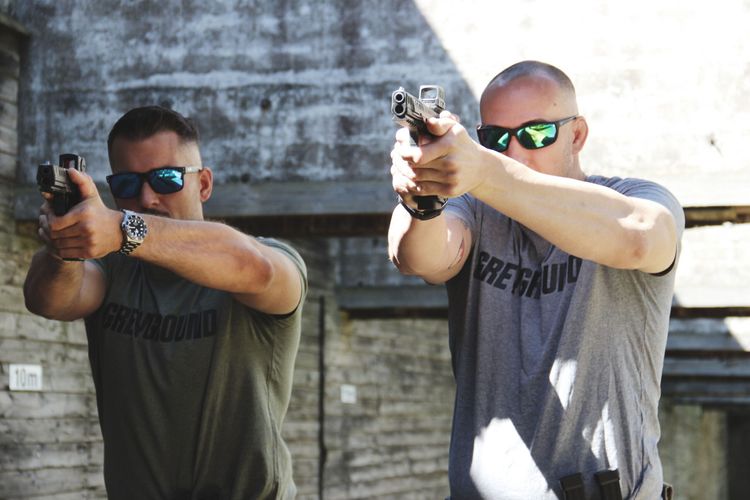Precision... Precision is practically the epitome of shooting; it's what people think about when you ask them about a skilled marksman. Taking the next step and inquiring about what precision actually means, many envision a target where all shots cluster tightly together in the center...
This image of precision aligns with the definition of absolute precision: shots grouped as closely as possible in the center of the target! A classic example would be the static air rifle shooter, who (more or less without time pressure) aims to place each shot as close as possible to the center of the target. The closer the shot to the center, the better.
However, this concept of precision doesn't apply universally in every aspect of firearm use. Alongside absolute precision, there exists a realm that could be termed relative precision. In contrast to the absolute precision described above (absolute because the absolute measure is the distance of the shots from the center), relative precision is in proportion to the size of the target and the available time.
Simply put, the question arises: How quickly can I shoot and still hit my target? This scenario arises in many different contexts and under entirely different circumstances. This dilemma is evident in biathlon shooting, where the shooter "only" needs to hit the black and would prefer a shot just inside the black if it saves two seconds in the shooting process. Similarly, it applies to defensive shooting, where a quick first hit offers a significant tactical advantage.
The following will outline the fundamentals of relative precision and the possibilities and limits of time-saving.
TIME IS PRECISION
When considering the question of speed and the potential for time-saving in shooting, two elements of the shooting process come to the forefront: aiming and trigger pull. The reason for this lies in the nature of these two processes. During aiming, the sights are aligned with the target. Achieving a perfect sight picture and optimal alignment with the target require processing a lot of information and constantly making (small) corrections. This takes time! The same applies to trigger pull. Pressure on the trigger is steadily increased with great caution, attempting to release the shot without any influence on the weapon. Executing this process perfectly also takes time.
Applying these conditions to the problem of the relationship between time and precision, one can provocatively ask how poorly (and thus quickly) both processes can be performed to still hit the target. An absolute statement cannot be made, as the actual time savings depend heavily on the individual shooter and their skills. However, the following points can provide a good starting point for improvement.
AIMING PROCESS
Starting with the aiming process, we must replace the aforementioned perfect sight picture with a less clean but still acceptable sight picture (so-called acceptable sight picture). Acceptable means that the sight picture does not need to be perfectly aligned or precisely centered on the target. Rather, it can be "bad" enough to just barely hit the target. This depends on the size of the target and the distance. Precisely determining which sight picture is sufficient for which target size and distance is very practice-intensive and demanding. Beginners can approach this by shooting at different targets with varying degrees of (un)clean sight pictures and assessing when they just barely hit the target.
As a rough classification, one can orient oneself on the following model:
- Stage 0: The firearm is brought in front of the eyes, and shots are fired over the silhouette of the weapon.
- Stage 1: Shots are fired over the front sight, but without precise alignment in the rear sight.
- Stage 2: The rear sight and front sight are set in relation to each other, but exact alignment and light gap are not considered; the front sight moves within the rear sight.
- Stage 3: The rear sight and front sight are aligned neatly; the light gap on the left and right is equal, and the rear sight and front sight are level.
The previous explanations can be applied directly to the use of red dot sights. However, the sight picture must be defined somewhat differently here, as only one plane, namely the red dot, exists. Nevertheless, various stages of confirmation or sight pictures can be distinguished. These are typically represented by the position of the red dot or its movement.
The above-described model would look like this:
- Stage 0: The firearm is brought in front of the eyes, and shots are fired over the window of the red dot sight, without needing to see a dot or check its position (targets larger than the area covered by the red dot sight window).
- Stage 1: The dot flashes in the window; it never stays still and can move over the entire size of the optic's window (targets that are at most as large as the red dot window's aperture).
- Stage 2: The dot hovers in the middle area of the window; it doesn't come to a complete stop and is in motion, but it moves within a smaller radius and is controlled (the movement radius corresponds to the target size).
- Stage 3: The dot stands as still and controlled as possible in the center of the optic (precise dot shots).
TRIGGER PULL PROCESS
If we transfer the points just described to the trigger pull process, we could speak analogously to our acceptable sight picture of an acceptable trigger behavior; a way of activating the trigger that is just dirty enough (and thus consistently faster) to still hit the intended target.
Unfortunately, it's not as straightforward to illustrate the various stages of dirtiness as with the sight picture because the speed and (un)cleanliness of pulling the trigger depend heavily on the shooter's training level and personal abilities, as well as the firearm/trigger system used. However, to provide a rough orientation, we can consider the following ideas:
In general, most triggers have a certain take-up where there is little resistance but a lot of travel. This is followed by a shorter travel section that has more noticeable resistance. Lastly, there is a section where only a very short distance remains, but a final high resistance (the so-called wall) must be overcome.
To visualize this again briefly, the longer the distance and the more resistance we have to overcome, the greater the risk of pulling the trigger and thus having a bad outcome. It makes sense, therefore, to overcome as much distance and resistance as possible in advance for the most precise shot, and then essentially only overcome the last small amount of distance and resistance for the actual shot release. This is called "trigger prep" in English or "Abzugsvorbereitung" in German. In this process, I can overcome distance and resistance step by step with great sensitivity, and the firearm remains on target. However, the downside of this approach is that it takes time. If I want to save this time and the size of my target allows for a relatively imprecise shot, I can, in turn, overcome the full distance and resistance all at once. This often comes at the cost of precision.
How much precision is sacrificed depends on several factors, such as the shooter's skills, the trigger used, etc. Ultimately, the shooter needs to experiment a bit, testing different levels of cleanliness for trigger pulls at various distances and targets to gauge their precision potential.
As a guideline, starting with the three aforementioned trigger stages can be helpful:
- Stage 1: The finger is fully off the trigger, and in one (fast) movement, the full distance and resistance are overcome.
- Stage 2: The shooter approaches the trigger, overcomes the initial resistance and travels to the wall.
- Stage 3: The shooter attempts to prepare the trigger to 90 percent and increases the pressure on the wall up to this point before steadily working towards triggering the shot.
As mentioned earlier, the precision of the shot cannot be directly derived from the trigger pull variants mentioned above because it is a very individual matter. Many shooters can shoot extremely cleanly and quickly over the full distance and resistance of the trigger. The key is how quickly and tension-free I can move my index finger. This is ultimately a matter of practice.
Another crucial point is the "trigger reset." This refers to the process where the finger is taken off the trigger, and the trigger moves forward until it engages and then (in the case of semi-automatic weapons) the next shot can be fired. A common mistake here is that the shooter holds the trigger back for too long, only releasing it when the weapon has completed the cycling process. Often, a click (the trigger resetting) is heard after the shot, followed by the next shot. From the beginning, attention should be paid to performing the "trigger reset" during the cycling process of the firearm. This ensures that the firearm can be immediately made ready to fire again. For rapid shot sequences, releasing the trigger quickly is even more critical than pulling the trigger quickly.
APPLICATION EXAMPLES
In the realm of dynamic shooting, there are many application examples for the aforementioned considerations. Various drills and exercises require the shooter to possess the skills described above. Three examples for practicing or experimenting with these skills are the FAST Drill, the 3&2 Drill, and the 15-10-5 Drill.
In the FAST Drill, the shooter fires from the holster at a distance of 7 yards, initially firing two shots into a 5x3-inch rectangle. After a magazine change, four shots are fired at a circle underneath with a diameter of 8 inches. A good reference time is under five seconds. The first shot is typically fired after 1.5 seconds, and the second shot, with a split time of 0.5 seconds, is fired after a total of 2 seconds. The magazine change can take two seconds, leaving time for the remaining four shots, which should be fired with split times of 0.2 to 0.3 seconds. This example clearly shows that shots at the small 3x5-inch rectangle must be delivered carefully and thus relatively slowly. The clean setup of the sight picture and the precise trigger pull are necessary but take time. The four shots subsequently fired at the 8-inch circle can (or must, if the time limit is to be maintained) be delivered with a slightly dirtier sight picture and a quicker trigger pull.
The 3&2 Drill is shot at 3 yards. Here, from the holster, the shooter initially fires three shots at a USPSA A-Zone. Immediately after, there is a target change to a 3x5-inch rectangle directly above it. A good reference time is two seconds. For this, the first shot should be fired within a maximum of 1 second. The subsequent two shots should be fired as quickly as possible, with splits under 0.2 seconds. Then, there are 0.6 seconds left for the remaining two shots, meaning splits of 0.3 seconds. The first three shots can be fired very quickly due to the short distance and the size of the target. A precise sight picture with alignment over the rear and front sights or a clean visible red dot can be dispensed with. However, at the moment of transitioning to the 3x5-inch rectangle, a sight picture is needed to land hits reliably and consistently.
Finally, the 15-10-5 Drill should be mentioned. Here, at distances of 15 yards, 10 yards, and 5 yards, ten shots each are fired at a B-8 target. The time limit for the ten shots corresponds to the distance (15 seconds, 10 seconds, and 5 seconds). Ideally, there should be no discernible difference in hits between the different distances because the additional distance allows for cleaner processes (sight picture and trigger pull) that compensate for the longer time.
SUMMARY
The explanations are intended to shed light on the typical dilemma of practical dynamic shooting in the tension between time and precision. Of course, it is possible to save time or become faster in many other aspects. However, the areas examined here (sight picture and trigger pull process) represent the typical two areas where time can be effectively saved.



